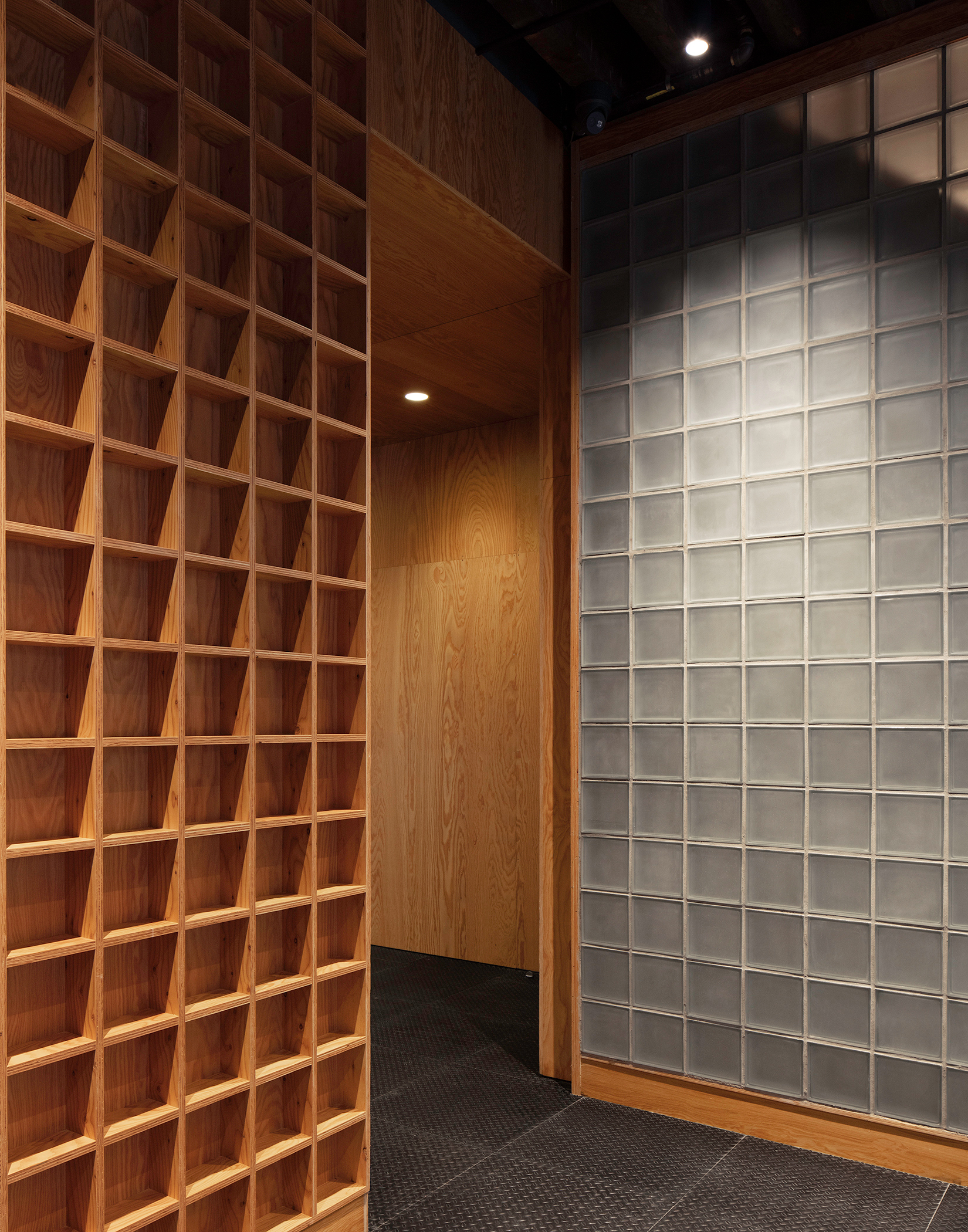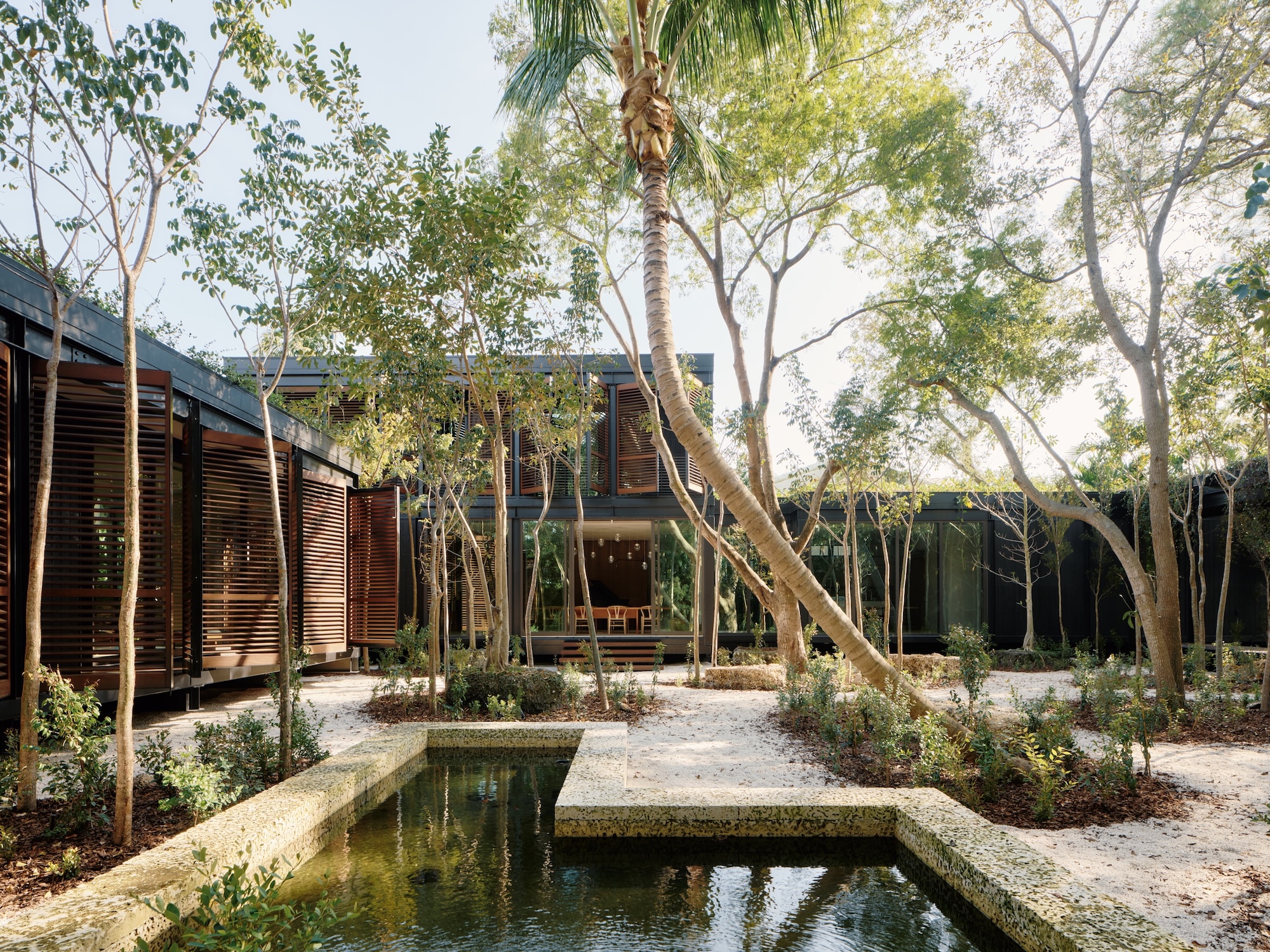1920s Brooklyn warehouse renovated into workspace by Worrell Yeung
A new workspace near Brooklyn Navy Yard in NYC stays true to its early 20th century identity as a factory, with industrial materials, minimal design details and custom furniture made of salvaged wood
Naho Kubota - Photography

New York City-based architecture studio Worrell Yeung has renovated and redesigned a 1920s factory building on the corner of Washington Avenue and Park Avenue near the Brooklyn Navy Yard. The new flexible workspace, 77 Washington, features an artist studio and a photography studio.
The project is an adaptive reuse success story, aimed to celebrate the neighbourhood's history and the design typologies of early 20th century masonry New York warehouses. Preserving the historical character of the six-storey masonry building, and a cluster of surrounding one-story buildings, was key to the commission for co-principal Max Worrell: ‘The existing buildings were so rich with history and layered with texture that we wanted our design to highlight these found conditions while also updating to accommodate new uses and new programmes.'

Careful tweaks helped to uplift the workspace and equip it for its new creative community. A verdant courtyard space was carved out by removing a roof, and a garage to the left of the factory was removed to make space for another lush garden, designed by Michael van Valkenburgh Associates. Original storefront openings were restored to create a visual presence of activity at street level, and bringing in more natural light to the buildings.
Rough, durable, unrefined materials fall into sync with the Brooklyn factory's history. The core material palette of diamond plate floors, unfinished steel railings and doors, and concrete floors. Benches in the garden were built from salvaged oak logs collected by a shipbuilder after storms. The architects collaborated with Navy Yard-based woodworker, Bien Hecho to use salvaged materials from the building to make a custom conference room table and lobby bench.

Minimal design interventions inspired by the history of the buildings uplift and enhance the space for its new use. A large glass block clerestory window diffuses light into the corner artist studio. To cover the elevator shaft openings, a lattice motif was layered upon steel grids which can be seen from the building's exterior. Brick walls were cleaned and sealed to preserve layers of old paint, to contrast with the clean concrete floors and white walls.
‘These interventions are a nod to the aesthetics of storied factory buildings and Navy Yard warehouses, which historically featured grids in their sash windows, fencing, and ship docks,' says co-principal Jejon Yeung.





INFORMATION
Receive our daily digest of inspiration, escapism and design stories from around the world direct to your inbox.
Harriet Thorpe is a writer, journalist and editor covering architecture, design and culture, with particular interest in sustainability, 20th-century architecture and community. After studying History of Art at the School of Oriental and African Studies (SOAS) and Journalism at City University in London, she developed her interest in architecture working at Wallpaper* magazine and today contributes to Wallpaper*, The World of Interiors and Icon magazine, amongst other titles. She is author of The Sustainable City (2022, Hoxton Mini Press), a book about sustainable architecture in London, and the Modern Cambridge Map (2023, Blue Crow Media), a map of 20th-century architecture in Cambridge, the city where she grew up.
-
 A compact Scottish home is a 'sunny place,' nestled into its thriving orchard setting
A compact Scottish home is a 'sunny place,' nestled into its thriving orchard settingGrianan (Gaelic for 'sunny place') is a single-storey Scottish home by Cameron Webster Architects set in rural Stirlingshire
-
 7 colours that will define 2026, from rich gold to glacier blue
7 colours that will define 2026, from rich gold to glacier blueThese moody hues, versatile neutrals and vivid shades will shape the new year, according to trend forecasters
-
 In Norway, discover 1000 years of Queer expression in Islamic Art
In Norway, discover 1000 years of Queer expression in Islamic Art'Deviant Ornaments' at the National Museum of Norway examines the far-reaching history of Queer art
-
 Step inside this resilient, river-facing cabin for a life with ‘less stuff’
Step inside this resilient, river-facing cabin for a life with ‘less stuff’A tough little cabin designed by architects Wittman Estes, with a big view of the Pacific Northwest's Wenatchee River, is the perfect cosy retreat
-
 Remembering Robert A.M. Stern, an architect who discovered possibility in the past
Remembering Robert A.M. Stern, an architect who discovered possibility in the pastIt's easy to dismiss the late architect as a traditionalist. But Stern was, in fact, a design rebel whose buildings were as distinctly grand and buttoned-up as his chalk-striped suits
-
 Own an early John Lautner, perched in LA’s Echo Park hills
Own an early John Lautner, perched in LA’s Echo Park hillsThe restored and updated Jules Salkin Residence by John Lautner is a unique piece of Californian design heritage, an early private house by the Frank Lloyd Wright acolyte that points to his future iconic status
-
 The Stahl House – an icon of mid-century modernism – is for sale in Los Angeles
The Stahl House – an icon of mid-century modernism – is for sale in Los AngelesAfter 65 years in the hands of the same family, the home, also known as Case Study House #22, has been listed for $25 million
-
 Houston's Ismaili Centre is the most dazzling new building in America. Here's a look inside
Houston's Ismaili Centre is the most dazzling new building in America. Here's a look insideLondon-based architect Farshid Moussavi designed a new building open to all – and in the process, has created a gleaming new monument
-
 Frank Lloyd Wright’s Fountainhead will be opened to the public for the first time
Frank Lloyd Wright’s Fountainhead will be opened to the public for the first timeThe home, a defining example of the architect’s vision for American design, has been acquired by the Mississippi Museum of Art, which will open it to the public, giving visitors the chance to experience Frank Lloyd Wright’s genius firsthand
-
 Clad in terracotta, these new Williamsburg homes blend loft living and an organic feel
Clad in terracotta, these new Williamsburg homes blend loft living and an organic feelThe Williamsburg homes inside 103 Grand Street, designed by Brooklyn-based architects Of Possible, bring together elegant interiors and dramatic outdoor space in a slick, stacked volume
-
 This ethereal Miami residence sprouted out of a wild, jungle-like garden
This ethereal Miami residence sprouted out of a wild, jungle-like gardenA Miami couple tapped local firm Brillhart Architecture to design them a house that merged Florida vernacular, Paul Rudolph and 'too many plants to count’